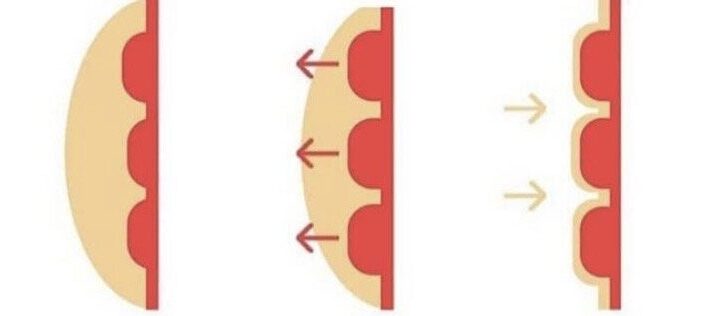It is very common for a Personal Trainer to hear the words ‘I would like a six pack‘ from a client or to see people relentlessly doing sit-ups day-after-day to get visibly chiseled abs. However, by doing endless numbers of sit-ups you only strengthen and increase gains of the abdominal muscles, not necessarily burn the excess fatty tissue which is hiding those muscles.

Excess body fat or higher fat percentage causes abs to be covered.
Doing sit-ups will only make those muscles bigger.
No matter how hard you work the abs, a variety of training methods should be used to burn fat and tone up.
An interesting fact; it is said that it would take approximately 22,000 ab crunches to burn one pound of fat. On the other hand, strengthening the abs requires a variety of abdominal exercises consistently; little and often.
A easy mistake to make when working towards a six pack or efficient stomach tone is to train with too much emphasise on the front of the body. By working out the abs and neglecting other body areas (in particular, the back muscles), muscular imbalances can occur. When the front side of the body is tightened, the back lengthens and in extreme circumstances can make everyday activities such as walking a challenge. It is important to find a whole body balance when exercising and if you have a one muscle group specific goal, ensure that antagonistic muscle pairs are being trained equally.
The story below is a real-life example of someone who made the mistake of incorrectly training for six pack abs:
‘When I was back in high school, I had a six-week phase during the summer holiday where I dedicated myself to getting a six pack. It was a vanity project and I knew all the abs exercises as I was a sportsperson. Multiple times, every single day, I would do as many sit-ups, v-sit-ups, russian twists, etc as I could fit in. I achieved the desired look and went back to school wearing an over-the-shoulder satchel which carried all my books and schoolwork. Something was wrong; two weeks into the school term, as I was walking outside, I collapsed. I could feel something in my lower back, particularly on one side. After receiving physiotherapy we concluded that all the ab exercises I had done did the job of strengthening my front half but at the same time, pulled my back, lengthening and weakening the muscles. When I returned to school with a heavy satchel over my body, my back was working overtime on one side holding myself and the satchel upright. In just a couple of months, I had caused a muscular imbalance so severe it caused me to collapse. I’ve learnt my lesson the hard way and my body is quite asymmetrical to this day.’
